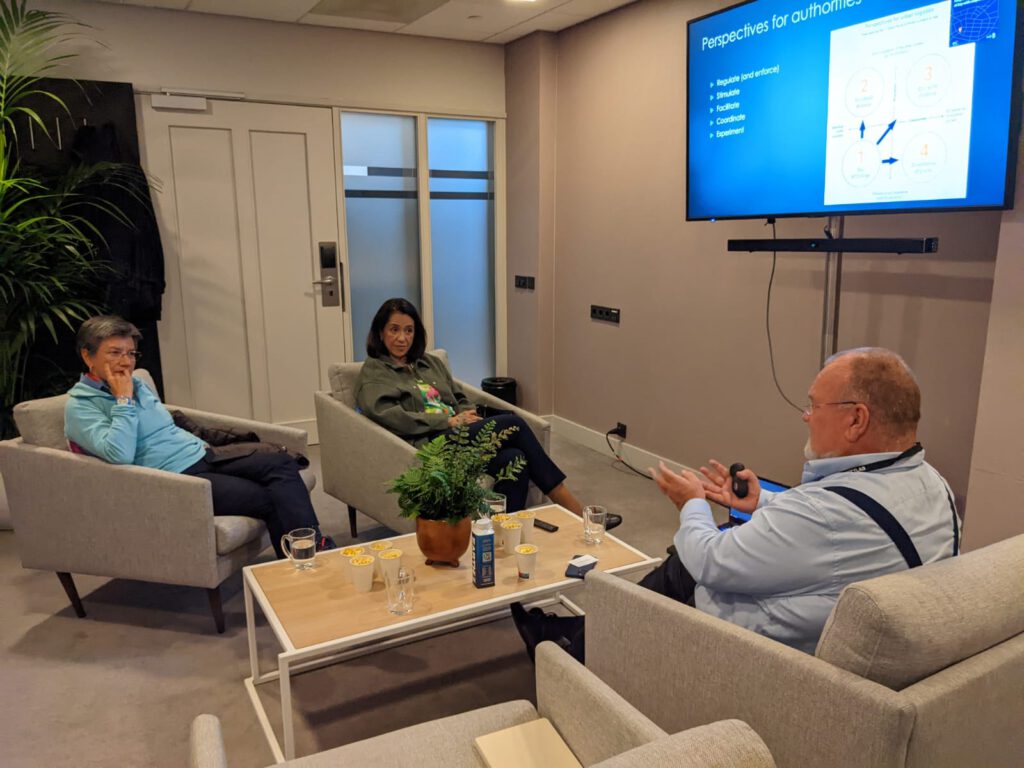At the Bloomberg Citylab conference in Amsterdam, I spoke with the mayor of Bogota (Colombia), Claudia López Hernández, about the challenges of megacities in city logistics. Surrounded by mountains, Bogota has transformed itself in recent decades from a city with poor infrastructure and significant safety and security problems to a more sustainable and liveable city.

Like many other cities worldwide, city logistics in Bogota has been neglected by local authorities. Bogota is also a city with a high population density, almost 15,000 people per square meter and over 10 million people, which, combined with poor and inadequate infrastructure, leads to congestion. Bogota is the most congested city in South America.
In particular, the conversation was about how Bogota’s city can engage tens of thousands of independent city logistics delivery companies to do more bundling with fewer vehicles. There is no sharing data among them. Delivery companies are reluctant to use (light) electric vehicles. They should collaborate.
A strong professionalization of the local delivery sector in Bogota is needed. But how do you do that without ending up with a big Uber, Bolt, or Amazon network where the delivery companies (and the clients) have no say? Ending up as gig-workers in a race-to-the-bottom.
An interesting idea is to organize local delivery corporations where the government helps the corporations with data sharing (via small platforms) and city logistics hubs. This could be done, for example, by creating and approving a regulatory framework for city logistics within the city (with regulated diversity), and by introducing integrated logistics traffic management (with a city-wide platform). Recently, BVL and Roland Berger presented a study on the role of local governments in this.
How can smaller companies manage city logistics better and more fairly (also for local shops and suppliers) with the new possibilities offered by, for example, Web3 and local-for-local collaboration models? Who has suggestions?
Walther Ploos van Amstel.
